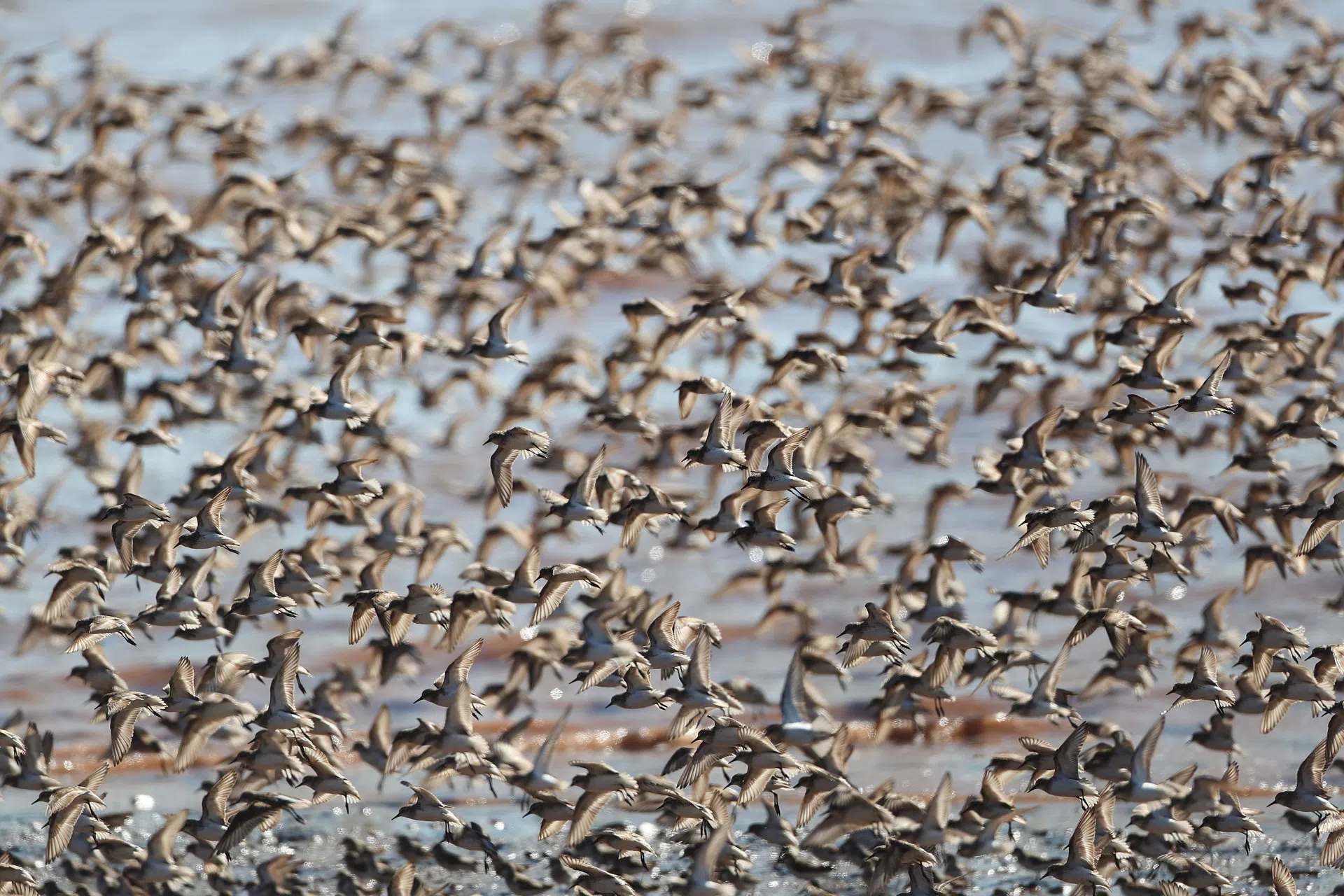Tens of thousands of semipalmated sandpipers are now resting in Johnson’s Mills.
It’s an annual stop on their 10,000-kilometre migration to South America where they will spend their winter.
Lead Shorebird Interpreter for the Nature Conservancy of Canada Simone Boivin says to avoid predators, they do what looks like an aerial ballet, “People sometimes call it a shorebird ballet. It’s called the murmuration, where they fly around in these big groups and take turns together. It’s like a synchronized flight, basically.”
She adds the birds have a white stomach and a dark back, so as they turn, they’ll flash their stomach, which causes ripples of white through this big group of birds flying.
“It is just stunning and beautiful. It is spectacular to see.”
The peak for the sandpipers at Johnson’s Mills is around August 14th. Last year up to 117, 000 birds were observed in one day.
The birds choose to feed here because of the expansive mud flats.
“It is a soft mud that is covered during high tide, and exposed during low tide. There are a lot of tasty things living in that mud for the birds to eat, things like mud shrimp and mud worms, just small invertebrates. It is a really good food for them to eat, for them to fuel up before this long three-day nonstop flight that they have to make from the upper Bay of Fundy to South America,” Boivin says.
The best time to see the birds is two hours before high tide and again two hours after.
“We do also restrict beach access at that time, just because at high tide, the mud flats are covered, and so the birds get pushed up onto the beach. That is their only time to rest while they are in the Bay of Fundy. Each bird is only here for three weeks, and they have to double their body weight in order to make a successful migration from here to South America. They have to eat the entire time during low tide, and so high tide is really their only time to rest when those mud flats are covered.”
If you are going to observe the birds, you’re asked not to walk on the beach and disturb them.
“We have viewing platforms to see them from a safe distance, where you could still see them resting on the beach and doing those murmurations. We also ask people to keep their pets at home. For a small shorebird, your dog being around can be something else that could scare it.”





